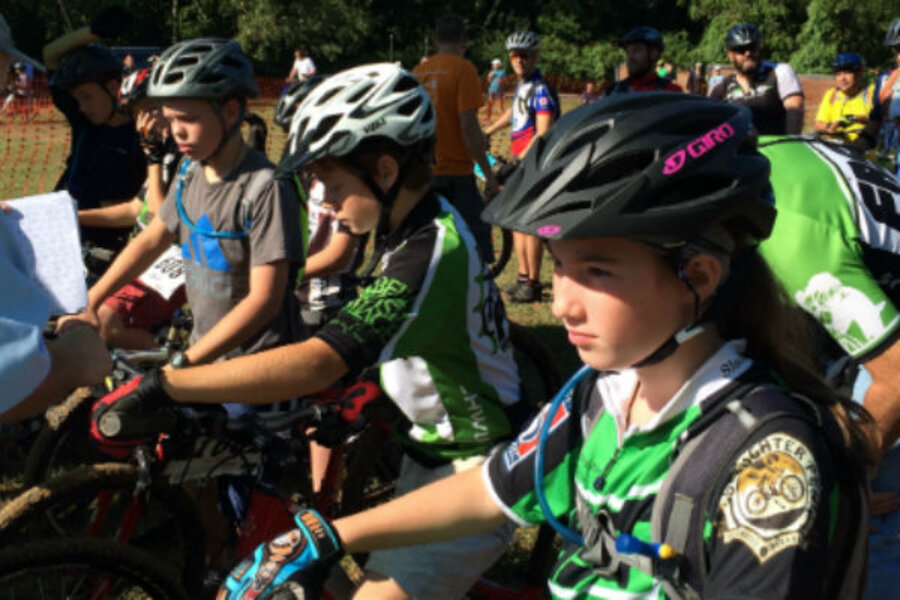Building a PE program, one bike at a time
Loading...
Four counties in Northwest Arkansas (with some spillover into neighboring states) have incorporated bicycling into the physical education curriculum at local schools, thanks to a series of grants bringing in more than 500 bicycles to the school district.
The region has had a small dedicated cycling community since the 1970s, but it has since gone mainstream as the bicycle trail network continues to grow and as people from across the country relocate to the area.
Fortune 500 companies like J.B. Hunt, Tyson Foods, and Walmart are regularly creating jobs in the region, which have caused the population to grow at an average rate of 24.2 new residents per day since 2010.
“There has been a marked shift in the last five years, as we have seen paved and mountain bike trails complete on the ground,” says Misty Murphey, the regional trail coordinator for the Northwest Arkansas Council, “Every evening and weekend, the 36-mile Razorback Regional Greenway trail fills with cyclists and pedestrians using the Greenway for transportation and recreation.”
The schools are investing in the infrastructure to support a vibrant biking community and to build enthusiasm among the youth of the community. It started with a grant application by Lincoln Junior High PE teachers in the spring of 2011 for $2,500. The grant was approved and doubled, allowing the school to purchase its first order of 23 bikes.
In 2012, the school district received a grant allowing every school in the district, elementary to high school, to buy bikes for their own PE programs, bringing the district wide total to 540 bikes.
“Maintenance is one of the most expensive elements to this program.” Says Casey Hicklin, one of the original grant-writers from Lincoln Jr. High. “But the district is 100 percent behind the concept. To support the program a bike maintenance shop and class has been established at the high school.”
All the schools in the district take care of their own minor maintenance issues like flat tires or bent rims, while bikes needing more involved work get sent to the high school for repairs (a second high school is being built and will likely have a bike shop and class as well). Initially some local bike shops were a little concerned about losing business. But local shops, now growing in number, have come to appreciate the infusion, because now that the kids have had such great exposure to bikes, families are investing in having bikes at home.
“The trails become an outdoor classroom,” says Alan Ley, director of outreach and advocacy for Bike Bentonville a 501(c)(3) organization in Bentonville, Ark. “Getting kids introduced to riding at a young age and educating them at school about safety, etiquette, and maintenance will have long term effects on the riding community for years to come. If nothing else, it provides a physically active activity and pulls kids away from the sedentary lure of the many screens that surround us.”
With more than 200 miles of road and mountain bike trails, including the 36-mile Razorback Regional Greenway connecting five cities, the Northwest Arkansas Council has worked hard to build a bike friendly community for families.
After being ranked dead last by the League of American Bicyclists of bike-friendly states in 2008, Northwest Arkansas is now home to one of eleven world wide International Mountain Biking Association (IMBA) Silver Certified Ride Centers, in Bentonville. This Silver certification means Bentonville is one of the top mountain biking destinations in the world with a number of maintained trials with consistent signage, numerous bike shops, clinics, guided rides, riding groups, mountain-biking events, and more.
Towns like Bentonville are showing how the drive of a few dedicated bike lovers can override the lure of screens for kids and supplement sports programs for kids of all ages with outdoor adventures.






